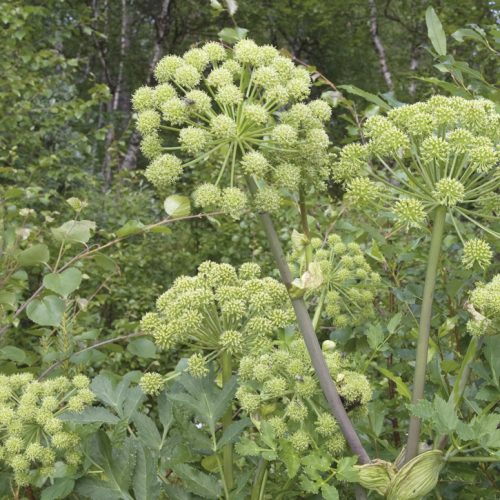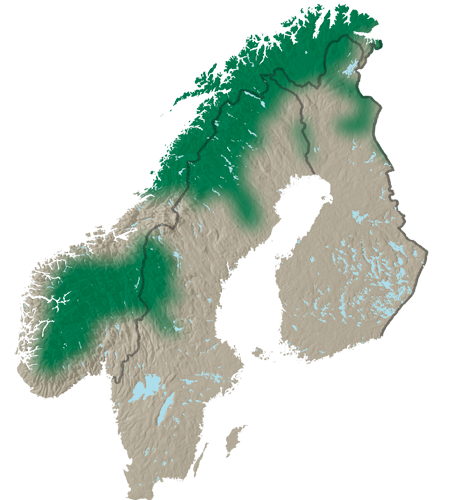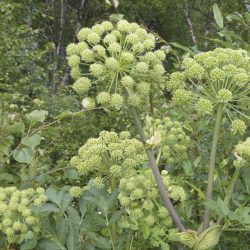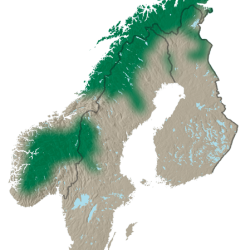Angelica
Angelica archangelica ssp. archangelica
In 1993, a person living in Utsjoki told a researcher of the Finnish National Board of Antiquities as follows:
”People travelled from here to the River Levajoki to get parts of the angelica. They used to feed the young leaves to cows by way of medicine. If you had problems with your eyes – if, for example, you suffered from snow blindness – you would go to Levajoki and put you head under the water and look into the river. People believed that the pure fell water would clear and clean the eyes.”
The outermost parts of the flowers of the angelica and its seeds and roots were dried and used as medicine. The root was dug from the ground early in spring or in the autumn when the plant faded. The dried roots were chewed when travelling and in freezing weather in order to avoid catching a cold. They were also a good treatment for cough.
In Inari, young men used to bring their wives roots of the angelica when they came home from herding the reindeer. For example, T. I. Itkonen wrote: ”In July, when the girls and boys herd the reindeer up on the hills and return home in the morning or the evening, they have stuffed their clothes full of angelica stems. They give the stems to their family, and everyone eats them with a good appetite.”
The angelica is also grown for industrial use. It is made into oil, which is used in liqueurs and medicines that are a treatment for stomach pain, cough and the flu. The plant contains furanocoumarins, which improve digestion and intensify the functioning of the gall bladder and the salivary gland.
The angelica was used as treatment for cough, weak circulation, abdominal and other internal troubles, rheumatism, scurvy and exhaustion and as protection against epidemics. The plant works as a stimulant, and especially its root helps people stay healthy and strong until a high age. The angelica contains vitamin C, iron and small amounts of antibiotics.
The angelica has a solid stem, and the plant can reach a height of two metres. It is a bi- or triennial flower, which withers after blooming. The range of the angelica covers especially Lapland, where the plant grows on creeks, rivers and the highland area. It is rich in vitamin C, proteins and minerals. It also contains essential oils, which consist, for example, of borneol, camphene and myrcene.
Words of warning:
The other subspecies of the angelica, the beach angelica (Angelica archangelica ssp. litoralis), which grows on the coast, cannot be eaten or used as a medicine.
Pregnant women and persons using blood thinning medicines should not eat the angelica. The plant contains substances which may, together with UV radiation, cause skin reactions. Such rashes are chemical – not allergic – reactions, and they may last for long.









